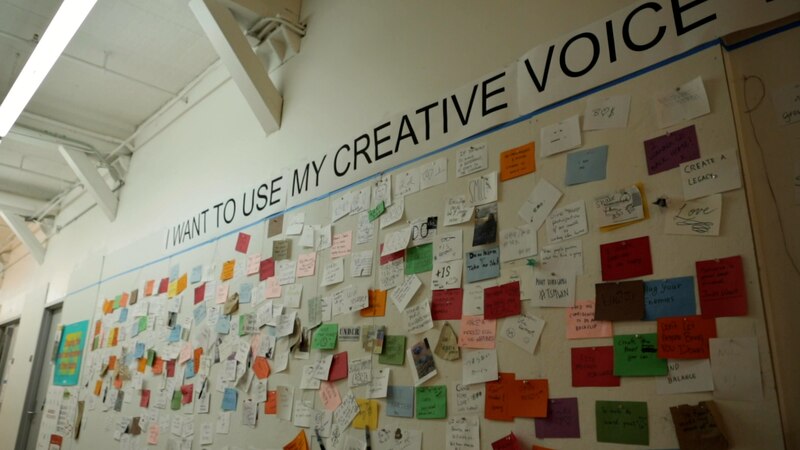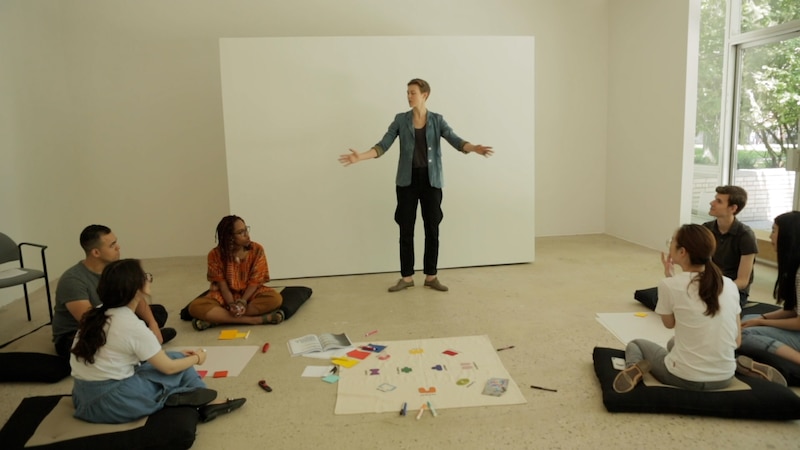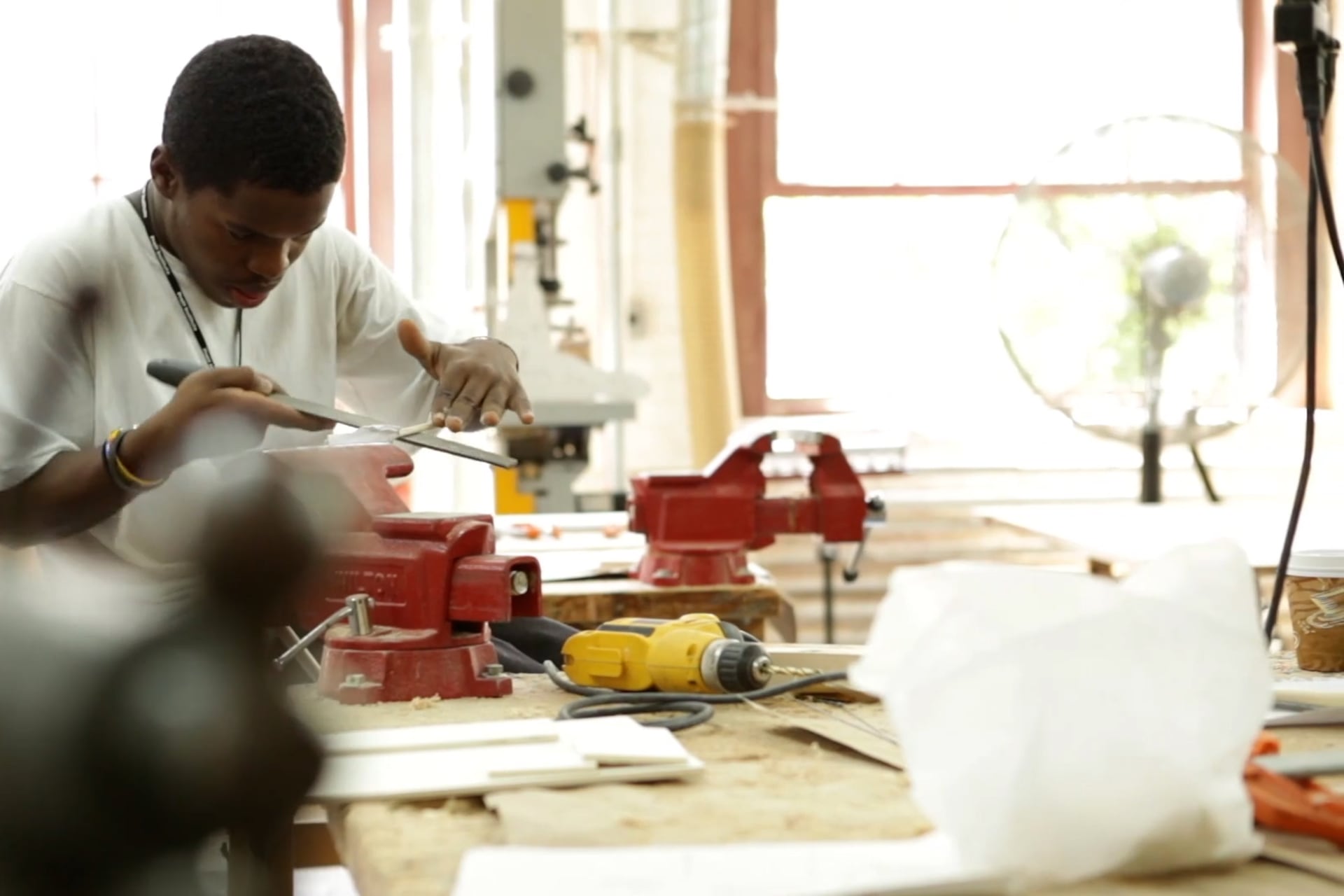Design Works High School, opening this fall in downtown Brooklyn, has a mission: to create socially conscious design professionals.
Students at the new social justice-oriented school will spend their freshman year studying how housing and environmental issues affect their community. They will also learn about the politics of poverty and inequality. Then they will choose among three specialties: housing equity, tech equity, and design equity.
“When CUNY is holding a big talk about water, and how safe water is an equity issue, we want our young people to not just be invited to come to see the talk, but to be able to go toe-to-toe with those experts,” said Corinth Hunter, who has served as project coordinator for the new school and hopes to lead it as principal.
Hunter said having students focus on the language and literature of topics, such as one’s privilege and position, is imperative, particularly in their first year. She wants students to understand logically what these terms mean before they begin offering solutions.
The school’s three tracks could lead students to careers in urban planning, software engineering, and interior design.
Bank Street College of Education, Pratt Institute, and New York City’s education department are opening the doors this fall to Design Works High School, or DWHS. Birthed from the 2019 Imagine NYC Schools competition, which had over 200 entries, the new school originally planned on having a freshmen class of 80. However, after a growing waitlist of 200 students and counting, it has bumped the number to 90.
Bank Street President Shael Polakow-Suransky said one of the stronger selling points for prospective parents and students has been the school’s direct pathway to a promising design career. Hunter said another selling point has been the degree of intimacy she and others have offered incoming students before the new school year even begins.

An outreach plan rooted in community participation
DWHS is building its intimate setting through a community-centered tactic called participatory practice. Essentially, students and community members will work together to decide the problem and solutions plaguing their everyday lives instead of students discussing problems and solutions by themselves.
Pratt Institute President Frances Bronet said, “We are not NYU, we are not Columbia. We are a small school of 5,000 students, but we are committed to participatory practice, and that’s what sets us apart.”
According to its website, participatory research experts at TakeRoot Justice say that “local groups are the experts on what their communities need to thrive,” while NYU Steinhardt has a report saying participatory practice benefits students by teaching them how to have a voice and weigh solutions that impact their community.
In that spirit, Hunter, her team, and Impacct Brooklyn, a nonprofit focusing on housing equity support for Brooklyners, went to community events, block parties, and high school fairs in District 13, which includes some of Brooklyn Heights, Fort Greene, Clinton Hill, Navy Yard, and Bedford Stuyvesant. From October to December, they hit the pavement to get the word out about DWHS.
Hunter started a Mailchimp newsletter, and while visiting community events, she would encourage people she met along the way to sign up. While the school wasn’t yet up and running, Hunter used the newsletter as a tool to collect data from interested parents and students by adding surveys inquiring about preferred start times and what topics students enjoyed learning the most. This outreach strategy helped Hunter build relationships with students and parents well before the school’s opening.
“There’s an attraction to a small school that listens,” she said.

After gathering information about students and teachers through her Mailchimp efforts, Hunter and her staff have been contacting families that have accepted a spot at DWHS who would qualify for free and reduced price lunch and after-school programs to inform them of other resources, and then supported families through those applications. Some of these programs include Pratt’s Design Initiative for Community Empowerment and its Young Scholars program.
DICE focuses on creative thinking and problem-solving through studio classes in design. Pratt’s Young Scholars offers mentorship and college readiness guidance over a three-year period.
Social justice meets design curriculum through local partnerships
Given the school’s relationship this year with Pratt Institute, a top design college, school officials believe that the three career tracks will offer a concrete pathway to higher education opportunities.
The school’s day-to-day schedule will be similar to a regular public school day, with some differences. Three times a week, students will have “design time” where their core classes will be 75 minutes instead of 45 minutes. Hunter says the goal is to allow students to create instead of just discussing how to solve problems.
To make sure no student falls behind academically, teachers will hold office hours at the end of each day to address students who might need extra time on a specific topic.
Because of its mission to center social justice, Hunter said the school also is committed to providing mental health support to students who could develop burnout. Hunter acknowledges that many students have struggled since the COVID-19 pandemic and that social justice work can be emotionally difficult work.
Students’ daily advisory time will be focused on addressing potential burnout, she said. Hunter has already been developing a partnership with counseling in schools and organizations running community circles. The school is also laying the groundwork for partnerships with arts-related groups such as the Brooklyn Academy of Music, BRIC Arts Media, and the Center for Urban Pedagogy.
Hunter hopes that prioritizing both social equity and design collectively will encourage students to experience more pride in where they come from and feel more confident in providing solutions to problems they could be experiencing themselves.
“There are schools out there that can create the best coder, the best designer, but if they don’t have that social justice lens, those students are just furthering the status quo,” she said.
Eliana Perozo is a reporting intern at Chalkbeat New York. You can reach her at eperozo@chalkbeat.org.





